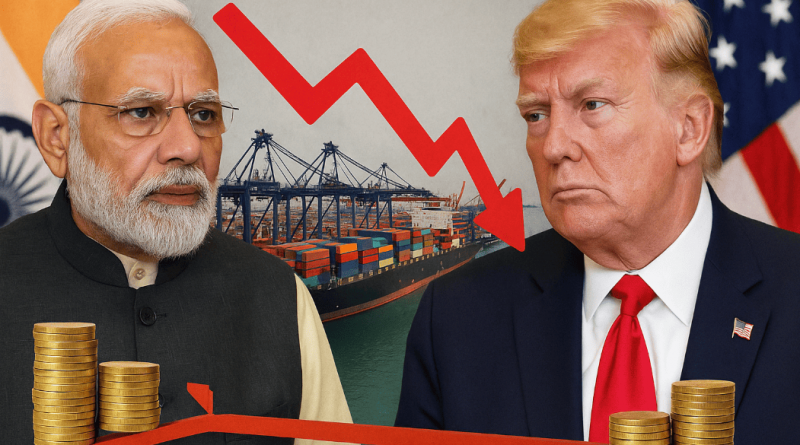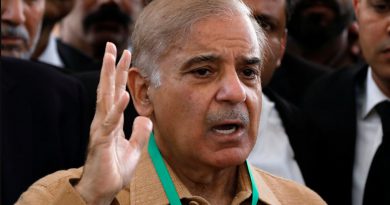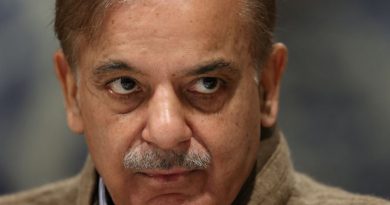ANALYSIS: Trump’s Tariffs on India—Friction or Opportunity for Reform?
For Washington, the choice is clear: strategic cooperation with India is not optional—it is imperative.
A much-anticipated joy erupted among the followers of Indian Prime Minister Narendra Modi when Donald Trump was elected as US President in November 2024. Given the perceived closeness between the two leaders, observers predicted that India–US relations would flourish. Trump’s predecessor, Joe Biden, had already cemented several initiatives to strengthen the strategic partnership, and many expected Trump to follow suit.
Yet six months into Trump’s administration, the United States has turned increasingly hostile toward India. Trump imposed reciprocal 25 percent tariffs on Indian exports and an additional 25 percent punitive tariff for India’s purchase of oil from Russia. His administration has continued to isolate India while threatening further measures. The logic appeared straightforward: squeeze India’s export margins, punish its Russian oil purchases, and force policy recalibration.
Ironically, the fallout with Washington is also opening new avenues for New Delhi to circumvent difficulties, accelerate economic reforms, and diversify its trade portfolio. As the 50 percent tariffs take effect, many are expecting shockwaves. This summer, India has registered its fastest growth in five quarters, posting 7.8 percent GDP growth in the April–June period. To sustain this momentum, India must maintain a steady international trade footprint and keep reform on track.
A Tale of Two Arcs: Friction and Recalibration
Trade friction is nothing new in US-India relations. In the early 2000s, disputes over textiles and IT outsourcing threatened to derail engagement. During Trump’s first term, disagreements flared over Trump’s protectionist policies on medical devices, e-commerce rules, and solar panels. Yet time and again, such clashes have become catalysts for negotiations. This time, however, New Delhi strategists are firm to double down on reforms, enhance export incentives, and diversify trade links.
To frame India purely as a trade irritant is to overlook this broader perspective. Over the last decade, India has laid down the infrastructure for resilience. The Goods and Services Tax unified a once-fragmented market. The Insolvency and Bankruptcy Code created cleaner exit channels for distressed businesses.
Digital innovations like Aadhaar (a universal ID) and UPI (instant payments) have revolutionized inclusion and efficiency. These reforms provide India with structural pillars to withstand even a 50 percent tariff shock. Fitch Ratings have further reinforced the point by affirming India’s credit outlook at “BBB– stable,” even after the tariff announcement. Investors understand that the Indian economy’s trajectory is one of expansion, not contraction.
Rebalancing, Not Retaliation
Rather than simply contesting tariffs, India is adjusting. It is reinvigorating ties with major partners such as the United Kingdom, where a new Free Trade Agreement removes tariffs on 99 percent of Indian exports. This demonstrates that inclusive diplomacy delivers better results than unilateral confrontation.
At home, the Commerce Ministry has unveiled a multi-tier plan—ranging from tax relief for exporters, to fast-tracking free-trade negotiations, to exploring WTO remedies. These measures reinforce India’s strategic autonomy and signal to Washington that New Delhi has choices. India can, and will, expand partnerships with those eager to benefit from its dynamism.
Former Reserve Bank of India Governor Raghuram Rajan offers an important perspective. He views the tariffs as a “wake-up call” highlighting India’s vulnerabilities, particularly its reliance on Russian oil. While discounted crude provides short-term benefits, it risks deepening friction with Washington. Rajan suggests imposing a windfall tax on refiners profiting from Russian crude, using the revenue to support small exporters in labor-intensive sectors (such as textiles and apparel) most affected by US tariffs. This approach internalizes the benefits of cheap energy while cushioning vulnerable industries.
The Risk of Estrangement
Trump’s current trajectory suggests that negotiations are unlikely in the near term. In the meantime, US consumers may face higher costs on goods from jewelry to generic medicines. Defense and technology cooperation, which expanded under Biden, could lose momentum. Ironically, while Washington applies pressure, US firms such as Apple, Amazon, and Tesla are expanding in India, treating it as a pillar of supply-chain diversification. Continued isolation risks pushing India to look elsewhere.
Recent gestures of rapprochement with China at the SCO Summit highlight that New Delhi has options, including deeper engagement with non-Western partners.
At the strategic level, the US risks losing a partner critical to maintaining the balance of power in Asia. India is the world’s fastest-growing major economy, the largest democracy, and a pivotal player in the Indo-Pacific. The Quad, counterterrorism cooperation, and supply-chain resilience all hinge on strong India–US ties. Several policymakers in Washington contend that these characteristics make India a natural ally for the United States.
Former US Ambassador Nikki Haley urged a rebuilding of the bilateral relationship, arguing that “the US must rebuild its relationship with India.” She stressed that strategic interests, not isolated trade disputes, should define policy direction.
The Way Forward
This is a dynamic neither side desires, yet recent remarks from senior US officials offer little hope of immediate course correction. The onus, therefore, falls on India to continue walking the path of resilience, reform, and realignment. New Delhi must act swiftly to support vulnerable sectors and MSMEs, ensuring they do not lose permanent market share to competitors.
At the same time, Washington must recognize that “America First” is not weakened by partnership with India—it is strengthened. Ensuring resilient allies and diversified supply chains advances American interests. For both countries, the priority must be to separate short-term tactical disputes from long-term strategic alignment.
India’s strong growth, reform trajectory, and strategic importance demonstrate that this tariff conflict at large represents temporary turbulence and not a rupture. By doubling down on reforms and diversifying trade partnerships, India appears to be resilient for the long haul.
For Washington, the choice is clear: strategic cooperation with India is not optional—it is imperative. In the grand arc of bilateral strategy, this tariff episode may be a disruptive chapter, but the US–India partnership remains a long-running storyline with many volumes still ahead.



